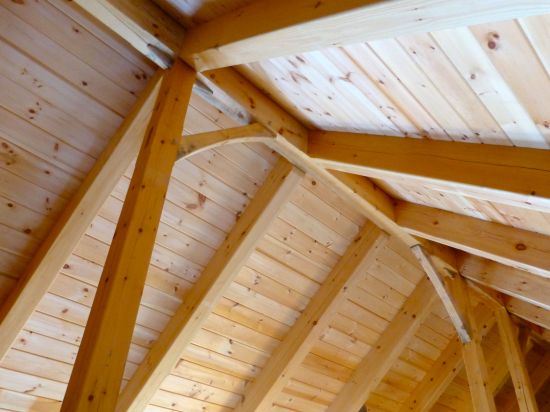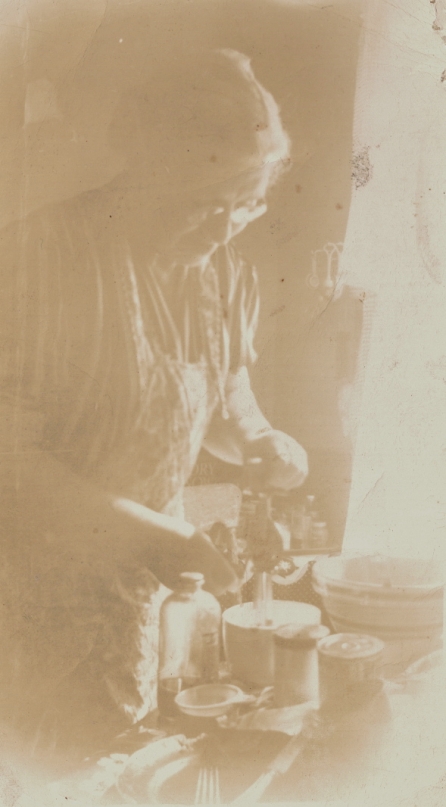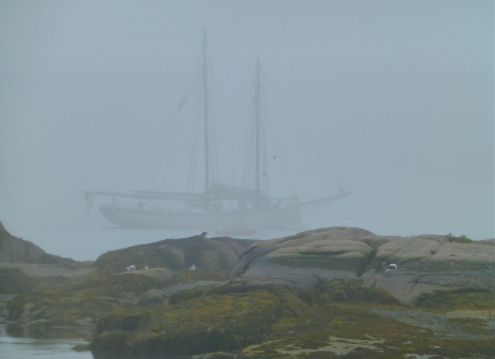
“The possible’s slow fuse is lit by the imagination.” – Emily Dickinson
Climbing way out on the limb into the realm of speculation and possibly unprovable things, I’m going to assert that that the number one obstacle to healing is a person’s resistance to believing in possibility.
Being an adult (aging?) student in Clinical Herbalism challenges me daily. With a sense of urgency that I observe my younger colleagues may not feel, I live with a feeling of sort of stuffing it all in. With so much to know, and such a deep sense of the scope of the challenge, I can almost literally hear the ticking of the clock. I began my organized studies at 56 years old; I’ll be 59 when I graduate in a year and a half. Thirty-six months of plant chemistry, botany, human physiology, pathophysiology, energetics and endless information and discussion about herbal therapeutics and nutrition. Every day brings more information than my aging (yes) and borrelia-affected synapses seem to be able to process.
But I do it. I do it because I’m driven to understand the elusive ideas of health and healing. How does health fall apart, causing depletion of the immune system and opening of pathways to chronic disease? Is it possible to heal—truly heal? How do we lose our vitality, and how can we regain it if it’s lost? What is vitality, anyway?
The answers are complex, of course. Just wrapping up a pathophysiology module on inflammation, my text book summary reminded me of upwards of 125 “key terms” I should understand to truly understand inflammation in the human body. Oy. I’ll do my best. Going for key concepts is my personal goal. Terms sometimes float on by without settling in, but I’m trying. To be fair, the program does not require this level of understanding and memorization of me. It’s the unspoken pressure of using an 1,800-page medical school textbook to grapple with a continually emerging and wondrously mysterious body of knowledge. It’s a good resource, but it falsely implies that answers and understanding lie out of the reach of mere mortals.
In a recent practitioner skills class, we were guided through the idea of healing narrative as it relates to hearing a client’s story (history) and, later, describing our assessment in response to their story. We will practice doing that in a way that fully respects and embraces the story we hear the client tell, while also reflecting our ideas as practitioners—in a way, reshaping the story to add possibility. We’ll look beyond the diagnosis they may carry as a heavy burden, and sometimes even as a badge of honor. How and why did the condition start? What has helped it? What makes it worse? In short, what is their belief system around their healing challenge and process? Do they believe they can feel better? Hearing that story fully, in all its rich detail, and putting it together with our knowledge, observations and (yes, even) beliefs is the art we will learn over our remaining time in the program. Circumventing the process of understanding the client’s story cannot begin to honor the truth of that story. Indeed, honoring that truth is step number one in creating a healing partnership.
In my recovery from Lyme disease, I hit the wall of my own beliefs many times. The Lyme “community” told me my healing challenge was nearly impossible, and there are many reasons to buy into this. Bacterial resistance, multiple (and emerging) tickborne coinfections, lack of research to support both long-term antibiotic therapy and so-called alternative therapies, as well as the sheer cost (financial and emotional) of long-term treatment all add up to deep and unrelenting hopelessness. My practitioners, with the exception of a couple of very special people, did not honor my story of my experience. I felt powerless, a victim of one infected tick and a massive and disempowering medical system. Hopelessness pushed me deeper into my illness with each passing day.
For me, cracking a tiny opening in that wall of hopelessness opened a healing path to that I’m still navigating and exploring. Admitting that the “possibility” of healing encompassed many things that I did not (and may never) understand was the initial breakthrough, as was accepting that the “information” would be endless. Not only does science evolve, but it lags behind alternative medicine by at least 15 years. And we’re only beginning to understand spirit; acceptance of its existence may be the best we can do. It follows then that relying on science alone is not enough to affect the life of a person dealing with a chronic and debilitating illness.
Opening my mind to the possibility of healing was pivotal, and I thank a tiny few of the many healthcare practitioners I engaged for helping me to do that. There was a moment when I was able to see myself as well, and that was when I truly began to heal. It was a moment that simultaneously embodied surrender and empowerment: surrender to a process of opening to new ideas, while at the same time knowing that I could sort through it all and direct my very personal healing process. I came to understand that it was my process, not that of the medical system or doctors. It was up to me to find healing. Understanding that moment in time, when possibility becomes hope, fascinates me endlessly.
We’re not taught to believe in possibility. The great and not always wonderful medical system we operate within delivers all-knowing narratives about our healing challenges. We are seldom encouraged to seek our own answers. In fact, my personal experience dealing with massive textbooks bears that out: we think we’re incapable of understanding. Here’s a blog post from Lissa Rankin, MD, a person whose words on healing and empowerment have opened my mind on many occasions. It’s easy to be constrained by a healing construct that in no way even remotely includes the possibility of healing or simply feeling a little better. Perhaps we protect ourselves from disappointment by negative belief systems. That may be okay, but it’s also possible that we close ourselves off from opportunities to embrace new ideas and information that could, just maybe, lead to feeling better.
My school experience is, in fact, opening my mind to possibility. Not “just” the possibility of healing through plant medicine, but the reality that healing is multi-faceted and even magical. It’s opening me to the the idea that I’ll know more tomorrow than I know today, and I’ll discard some ideas that I knew as truths along the way. I am even opening to the possibility that my brain can handle it all, and that I’ll emerge in December 2016 with a pile of new truths and a rich new perspective on all the truths I already know and those that others will offer to me.
And that limb that I’m so far out on? I don’t hear even a whisper of cracking.
“You must do the thing you think you cannot do.” – Eleanor Roosevelt








